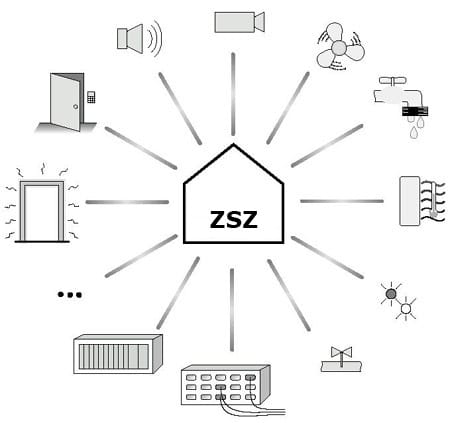Communication of external devices or systems with the IMS takes place via system controllers. Depending on the type, controllers have a certain number of inputs and / or two-state (relay) outputs. Using the inputs, they collect signals from external devices and transmit them to the system, and through the outputs affect the operation of local devices and systems.
Therefore, there are practically three ways for the IMS to work with external devices:
- By directly connecting individual devices to the appropriate inputs and outputs of controllers, e.g. temperature or lighting sensors to the inputs, central heating valves, relays controlling area lighting or fans to the outputs,
- By connecting the controller inputs and outputs to the respective inputs and outputs of the control panels or other intermediate devices to which the sensors and actuators of the local system are connected, e.g. to the control panels of the burglary or fire alarm systems, and by communicating with these control panels monitoring the status of detectors and control executive devices of the local security system,
- Through the mixed use of the previous two ways.

Of course, the system allows any connection of local devices and systems with each other, which in practice allows you to implement any dependency system, e.g. in the event of an alarm in the fire control panel the power supply is switched off (in pre-determined power supply circuits), the activated sprayer system is switched on emergency power supply system, open evacuation doors or smoke vents, and in the case of e.g. daily window opening (for ventilation purposes) the supply of central heating in a given room is stopped (or air conditioning devices are off) and mechanical ventilation devices are stopped / started. Such cooperation with external devices result in a significant reduction in the costs of operating the facilities.
